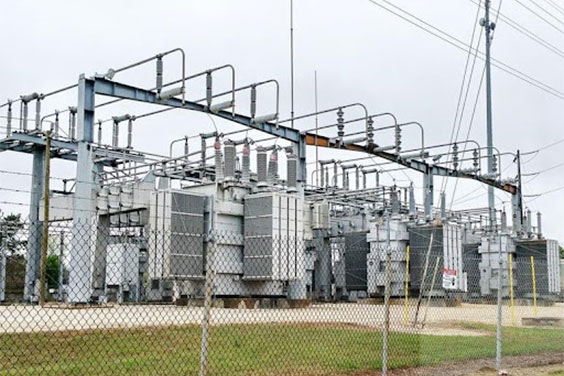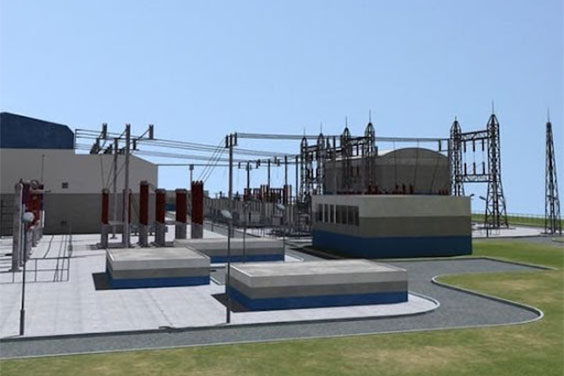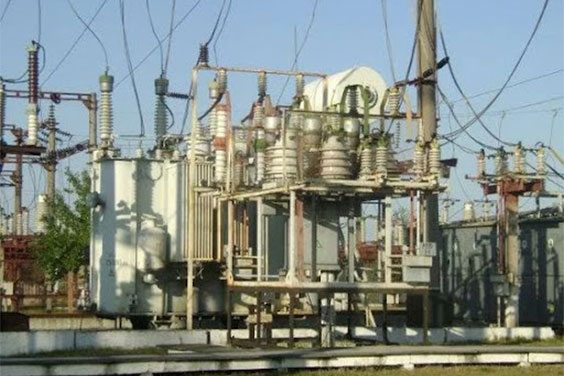
The substation is said to be a very crucial part of a power system. Let us discuss it in detail.
What Is A Substation?
A substation is a set of apparatus which are installed in such a way to protect and control the transmission of a power system. Substation switchgear, which is a part of the substation, helps in carrying, making, and breaking the normal load of current.
Also, compact substation manufacturer ensures that energy is transformed in secondary distribution from medium voltage to low voltage or low voltage to medium voltage.
Different Types Of Substations

Now, talking about types of substations, packaged substations can be classified depending upon the following parameters.
- Based on construction and design
- Based on the working role
- Based on service recruitment
- Based on the power network
- Based on operating voltage
- Based on insulation
Different Types Of Substations
Here, we will discuss those types of substations which are distinguished mainly on the basis of their physical features i.e, their designs and the way they are built.
Those include:
- Indoor Substation
An indoor substation is a type of substation in which the apparatus is set inside the building. The range in voltage is around 11,000 V, but it can be erected up to 33,000 V. The construction is complex, but faults, if any, can be easily detected in this type of substation. The space required is very little. Electrical switchgear helps in achieving this. - Outdoor Substation
In this type of substation, the apparatus is set outside the building. The voltage range, in this case, is 66 kV to 75 kV.The construction is not complex, but faults cannot be detected easily in this case. The space required is more. - Pole Mounted SubstationIt is a substation placed on a pole. It is said to be the cheapest form of the substation.
- Foundation Mounted SubstationIn foundation mounted substations, all the equipment is assembled and the substation is fenced.
- Underground SubstationThis type of substation is mainly for restrictive areas. As per the main purpose it is used to directly transfer electricity to the city center.
Based On Working Role

Here, we will discuss those substations which are differentiated on the basis of their performance. We will learn about which type of substation is needed at each step of the transformation of power transmission to distribution for usage.
- Step-up or Primary Substation
Step-up substation receives power from the facility and uses power transformers to increase the voltage to the desired location. Step-up substations are used in wind farms, hydroelectric projects, etc. It increases the voltage from 11 kV to 200 kV.
- Primary-grid Substation
Primary-grid substation comes to work to lower the voltage from the primary or step-up transmission. The output of primary grid substations works as an input for secondary substations where the voltage is again lowered for further transmission. It is created at a suitable load center.
- Second Substation
This comes to play after the primary-grid substation. The output of the primary-grid substation works as its input. It works along a second transmission line. It steps down the voltage from 66 kV up to 11 kV.
- Step-down or Distribution Substation
Step-down substations are located at the electrical grid at the switching point. It changes the transmission voltage to sub-transmission voltage. The range of voltage is around 69 kV. It is placed near the consumer’s end and it is a pole-mounted type of substation.
- Bulk Supply Substation
This type of substation is located on a high voltage transmission line and it supplies bulk power for industrial needs.
- Mobile Substation
A mobile substation is the one that is practically on wheels. It consists of a transformer, breakers, and bus work mounted on a self-contained semi-trailer which is pulled in a truck.
Based On Service Requirements
Next, we categorize substations on the basis of the services provided by them. That is, we will discuss in detail the usage of different types of substations in the power transmission process.
- Transformer Substation
A transformer substation is that type of electric substation which distributes power and also steps up and step down the voltage of an AC power system. Transformer substation comprises one or two power transformers, distribution equipment, control, and protective device and auxiliary equipment. It is the key element for an electric power substation. All in all, it is where bulk power is converted into a usable amount of power or vice versa.
It is classified into four categories- step-up or primary substation, primary grid substation, secondary substation, and step-down or distribution substation.
- Frequency Changer Substation
Changing frequency is a task of utmost importance and that is when frequency changer substation comes to the scene. It is an electric motor-generator that changes the power of an alternating current from one frequency to another.
It is used in industries mainly.
- Switching Substation
A switching substation or switching station is a substation without transformers. It operated on a single voltage level. It performs switching operations and does not alter the incoming and outgoing voltage levels.
- Converting Substation
Converting substations are the ones that change alternating current to direct current in power transmission. Alternating current is used inside the country while direct current is sent overseas along with subsea cables.
- Power Factor Correction Substation
Improving the power factor is one of the main concerns when it comes to power transmission. The power factor correction substation works in that regard, i.e. it improves the power factor of the transmission.
Based on Power Network
This one here concerns the power of the substations. That is, where we talk about the capacity of the substation and we will also know that each area in accordance to its capacity has different types of substations.
- Grid Substation
A grid substation comes in the system where the voltage has to be stepped up or stepped down. This is where the voltage is changed according to the need and the next process initiates. Its main purpose is to transfer electricity to a very large distance.
- Town Substation
The town substation is distributed in the town. The voltage ranges from 33/11 kV.
- Local Substation
Location substation is the type of substation that steps down the voltage of power transmission from 11 kV to 415 V. They are oriented in a way for domestic and local purposes.
- City Substation
City substation is the substation that works similar to town and local substations. It makes necessary changes in voltage to transform it from transmission line to distribution line.
Based on Operating Voltage
Here, we have those substations which are distinguished on the basis of voltage as the voltage has to be changed according to the requirement.
- High Voltage Substation
In this type of substation, power is taken from a point, transformed, and distributed to another point.
High voltage substation consists of high voltage switchgear, medium voltage switchgear, components such as high voltage equipment and transformers, auxiliary switches, control system, protective equipment, etc
The voltage range is from 11 kV to 66 kV. Liyond, as one of prefabricated substation manufacturers, produces this type of high voltage packaged substation switchgear, which gains a good reputation from the world.
- Extra High Voltage Substation
In Extra High Voltage substation, the voltage range is from 132 kV to 400 kV. Their function includes- stepping down and stepping up voltage of the distribution network, spread along with a country, etc.
Types of equipment of Extra High Voltage substation are- busbars, insulators, power transformers, circuit breakers, isolators, instrument transformers, surge arresters, neutral-earthing reactors, circuit-limiting reactors, shunt reactors, and capacitor bankers.
- Ultra-High Voltage Substation
When the voltage range is above 400 kV, this type of substation is called Ultra High Voltage Substation.
Based on Insulation
Here, we discuss substations based on insulation.
- Gas-insulated Substation A gas insulated substation is a high voltage substation in which the major structures are contained in a sealed environment. It’s also one type of withdrawable switchgear. It consists of dielectric gases such as SF6 or sulfur hexafluoride gas as the insulating medium. The components are electric bus bars, electric isolators or disconnectors, circuit breakers, circuit transformers, voltage transformers, earth switches, surge arresters, or lightning arrestors.As already mentioned, electrical switchgear is the one responsible for making, breaking, and carrying a normal load of current. So, vital importance has to be given while hiring gis switchgear manufacturers. Types of gas insulated substation: Isolated phase Gas insulated substation- In this type, all phases of the bay are assembled separately. For each phase, one pole of the circuit breaker, a single-pole of electrical isolators, a phased assembly of current transformers are joined together. Integrated 3 phase gas insulated substation- In this type, all three phases of current transformers, three phases of disconnectors, and all three phases of the circuit breaker are assembled in an individual space. Hybrid gas insulated substation system- It is a combination of isolated phase and three-phase gas insulated substations. The three-phase system simplest the connection and isolated phase prevents phase to phase faults and this design takes the best out of both, to come up with the optimum quality. Hence, the name “hybrid”. Compact gas insulated substation- In this type of substation, like RMU substation, the functional elements are enclosed in a single metal enclosure. Highly Integrated Gas Insulated Substation-A very efficient development in the world of substation. In this type of substation, all the substation pieces of equipment are enclosed in a single housing.
- Air-insulated Substation The air insulated substation is the one where the main circuit is insulated from the ground with the usage of porcelain and other insulators. The air-insulated substation is the most common type of substation. This type of substation is best suited for low voltage and is very efficient when the area is spacious. The time required for the erection is also less.
Conclusion
In simple words, a substation is a path that transforms the power transmission to a distribution line suitable for usage. As we have discussed various kinds of substations, and their subs categories, we have come to know that various factors and scenarios affect the type of substation that is suitable for that particular situation. If you are going to install high voltage substation switchgear, don’t hesitate to contact reputed packaged substation manufacturers.
Liyond has manufactured packaged substations and gis substations for ten years and has cooperated with top 50 electric companies like Eaton, the quality of packaged substation could be guaranteed.

